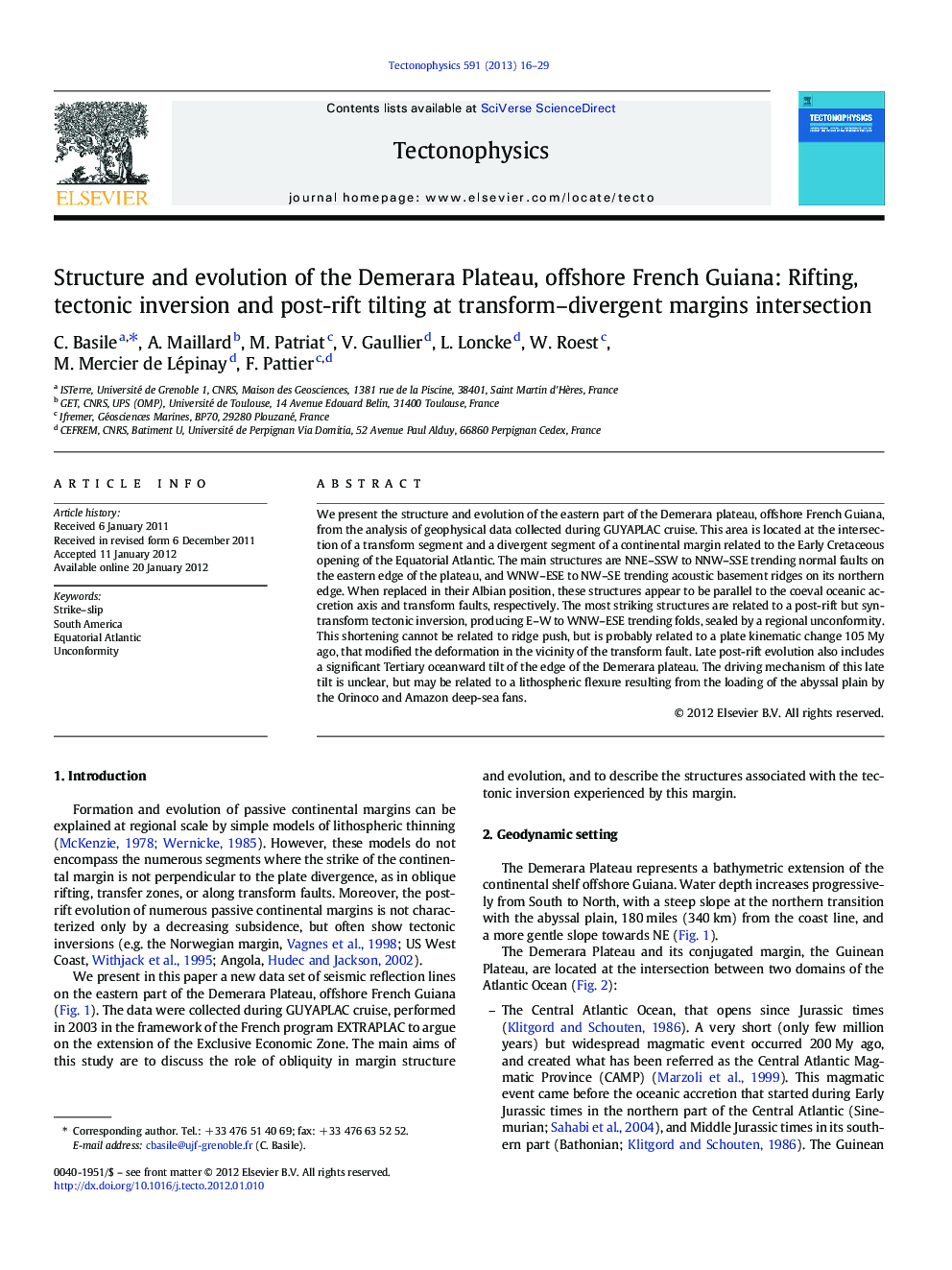| Article ID | Journal | Published Year | Pages | File Type |
|---|---|---|---|---|
| 4692413 | Tectonophysics | 2013 | 14 Pages |
We present the structure and evolution of the eastern part of the Demerara plateau, offshore French Guiana, from the analysis of geophysical data collected during GUYAPLAC cruise. This area is located at the intersection of a transform segment and a divergent segment of a continental margin related to the Early Cretaceous opening of the Equatorial Atlantic. The main structures are NNE–SSW to NNW–SSE trending normal faults on the eastern edge of the plateau, and WNW–ESE to NW–SE trending acoustic basement ridges on its northern edge. When replaced in their Albian position, these structures appear to be parallel to the coeval oceanic accretion axis and transform faults, respectively. The most striking structures are related to a post-rift but syn-transform tectonic inversion, producing E–W to WNW–ESE trending folds, sealed by a regional unconformity. This shortening cannot be related to ridge push, but is probably related to a plate kinematic change 105 My ago, that modified the deformation in the vicinity of the transform fault. Late post-rift evolution also includes a significant Tertiary oceanward tilt of the edge of the Demerara plateau. The driving mechanism of this late tilt is unclear, but may be related to a lithospheric flexure resulting from the loading of the abyssal plain by the Orinoco and Amazon deep-sea fans.
► Structure of the Albian to present day sedimentary cover of the Demerara Plateau. ► Evolution of the deformation, with post-rift but syn-transform tectonic inversion, that cannot be related to ridge push. ► Late post-rift tilt. ► Timing of transform versus rift deformation and meaning of unconformities in transform settings.
